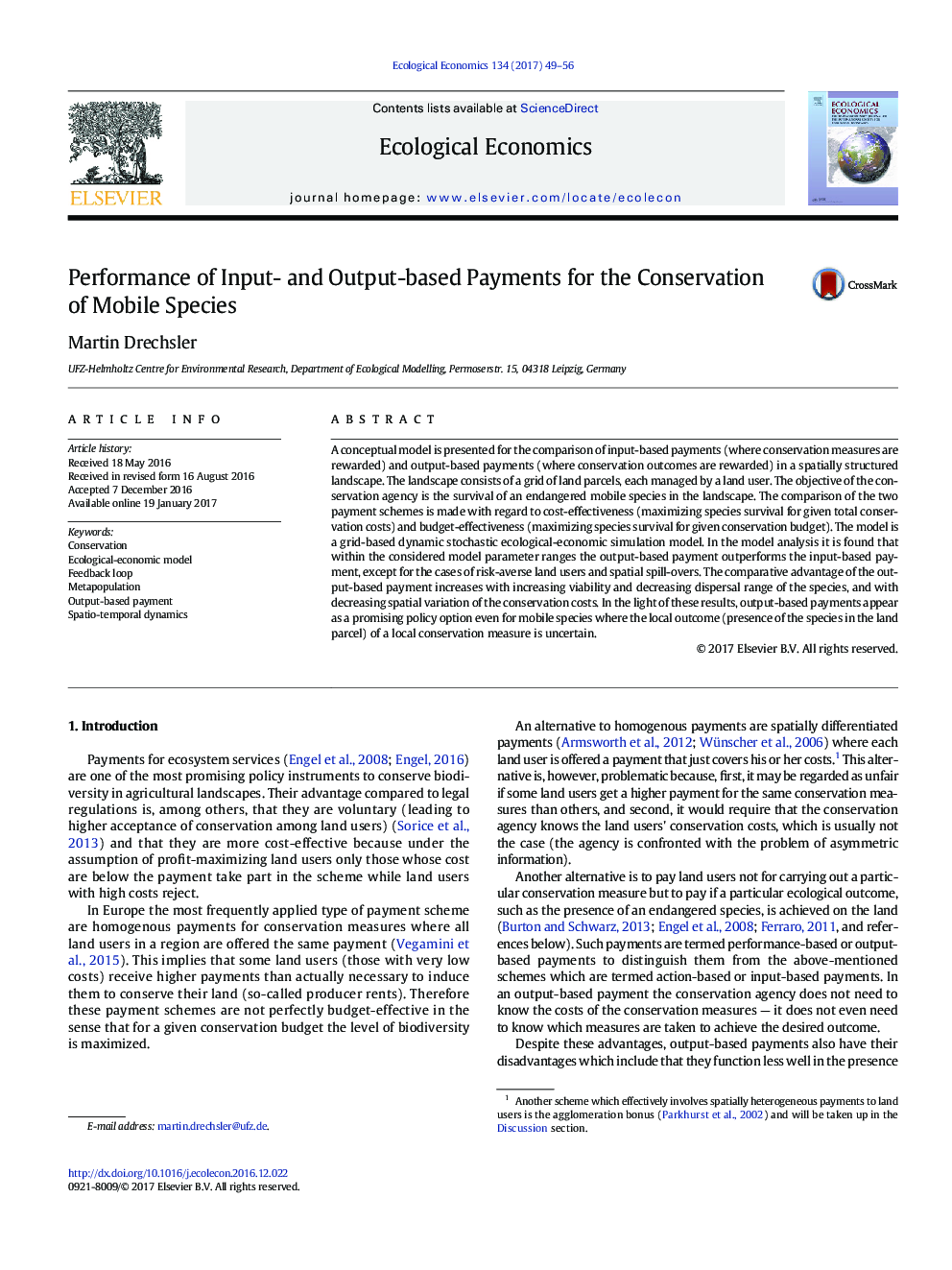| Article ID | Journal | Published Year | Pages | File Type |
|---|---|---|---|---|
| 5048680 | Ecological Economics | 2017 | 8 Pages |
â¢Output-based payments represent a promising policy alternative to input-based payments.â¢Output-based payments can be applied even for the conservation of mobile species.â¢Output-based payments may fail in the presence of risk aversion or spatial spill-overs.
A conceptual model is presented for the comparison of input-based payments (where conservation measures are rewarded) and output-based payments (where conservation outcomes are rewarded) in a spatially structured landscape. The landscape consists of a grid of land parcels, each managed by a land user. The objective of the conservation agency is the survival of an endangered mobile species in the landscape. The comparison of the two payment schemes is made with regard to cost-effectiveness (maximizing species survival for given total conservation costs) and budget-effectiveness (maximizing species survival for given conservation budget). The model is a grid-based dynamic stochastic ecological-economic simulation model. In the model analysis it is found that within the considered model parameter ranges the output-based payment outperforms the input-based payment, except for the cases of risk-averse land users and spatial spill-overs. The comparative advantage of the output-based payment increases with increasing viability and decreasing dispersal range of the species, and with decreasing spatial variation of the conservation costs. In the light of these results, output-based payments appear as a promising policy option even for mobile species where the local outcome (presence of the species in the land parcel) of a local conservation measure is uncertain.
